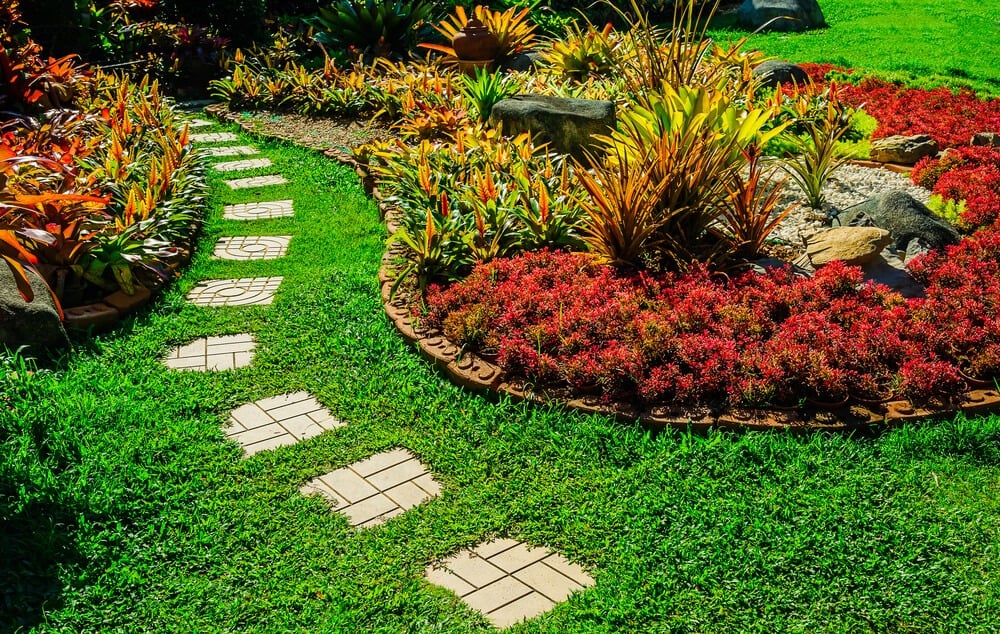26 Gorgeous Garden Themes You Can Grow In Your Backyard – From Wild To Whimsical!
Welcome! This article contains affiliate links, meaning I get a commission if you decide to make a purchase through my links, at no extra cost to you.
Choosing a garden theme can feel overwhelming, especially when you’re starting from scratch. But don’t worry! We’ve compiled the ultimate list of the best garden designs, themes, and layout ideas to inspire your next project. We also include suggestions for flowers, plants, and shrubs to help bring each theme to life.
So, gather around. Let’s brainstorm some epic garden themes!
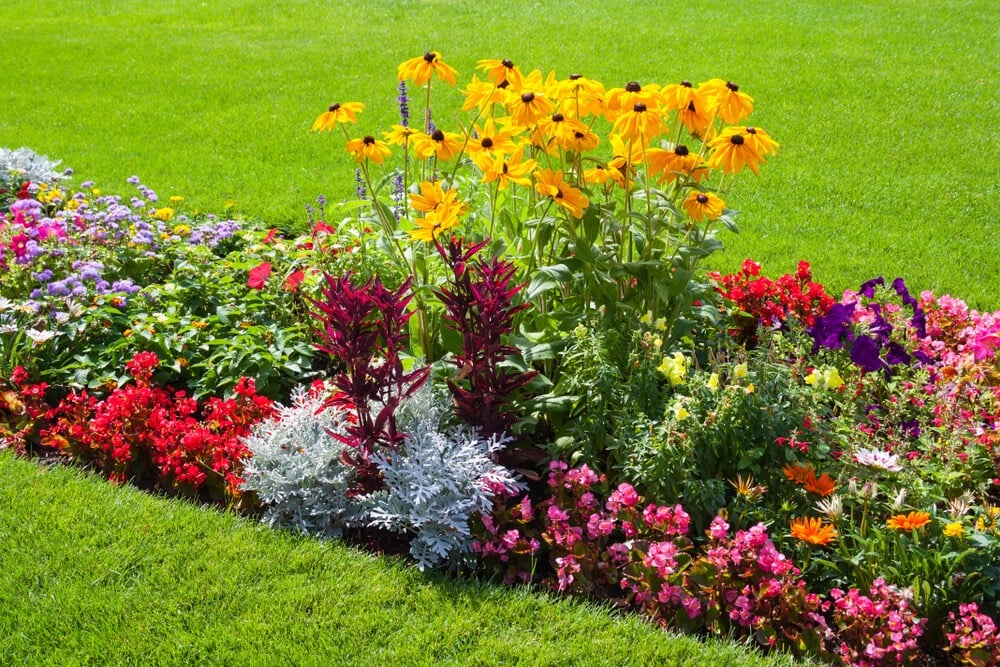
26 Functional Garden Themes For Any Yard Or Homestead
Let’s dig into these 26 inspiring garden themes and discover which will bring your outdoor dreams to life!
1. Chaos Garden

Chaos gardens celebrate spontaneity by scattering available seeds and letting nature take its course. This free-spirited approach creates unexpected plant combinations no designer would dream up, with volunteer seedlings germinating in surprising places and self-sowers claiming new territory each season.
- Embrace randomness! Broadcast a mix of seed types and allow volunteer plants to thrive where they emerge.
- Skip rigid spacing guidelines. Let plants compete naturally and create surprising combinations.
- Maintain minimal intervention. Selectively edit only when something truly threatens the garden’s survival.
Successful chaos gardens thrive with resilient self-seeders, such as California poppies, borage, nasturtiums, calendula, and bronze fennel. These crops randomly disperse themselves to create an ever-evolving tapestry of colors and textures.
2. Native Plant Garden
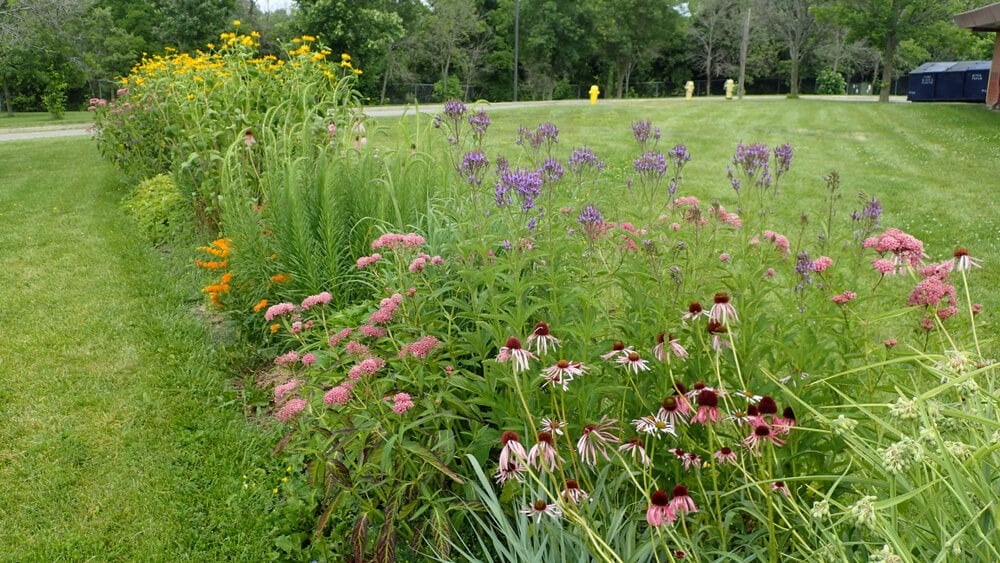
Work with Mother Nature, not against her. Native plant gardens showcase species that evolved in your specific region, making them perfectly adapted to local soil, rainfall, and temperatures. They support local pollinators, require virtually no fertilizer or extra water once established, and connect your landscape to your area’s more significant natural history.
- Research what’s truly native, not just “wild.” Big difference!
- Group plants by natural community, not just aesthetics.
- Be patient. Natives establish roots before shoots, often creeping before leaping.
Indigenous beauties like coneflowers, milkweed, goldenrod, serviceberry, and little bluestem grass work perfectly in many regions.
3. Curbside Garden
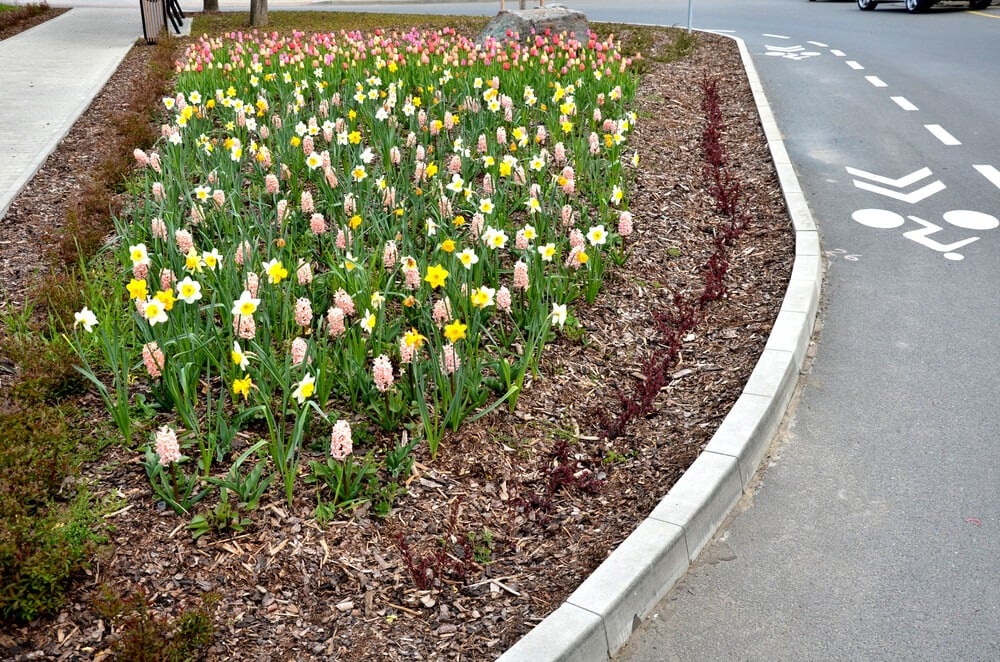
Curbside gardening is the ultimate garden theme hack for urban homesteaders. You can turn that boring strip between the sidewalk and the street into a colorful garden gem. The secret is choosing tough-as-nails plants that handle salt, foot traffic, and neglect.
- Plant in odd-numbered groups to create a garden that looks organic and natural.
- Use salt-tolerant plants near roads that see winter treatment.
- Layer heights. Tallest at the back, medium in the middle, and ground cover at the front.
Tough-as-nails performers like sedum, ornamental grasses, black-eyed Susans, daylilies, and lavender will survive street-side conditions while providing year-round interest.
Read More – How To Grow Delicious And Healthy Lettuce In Your Backyard Garden!
4. Edible Garden
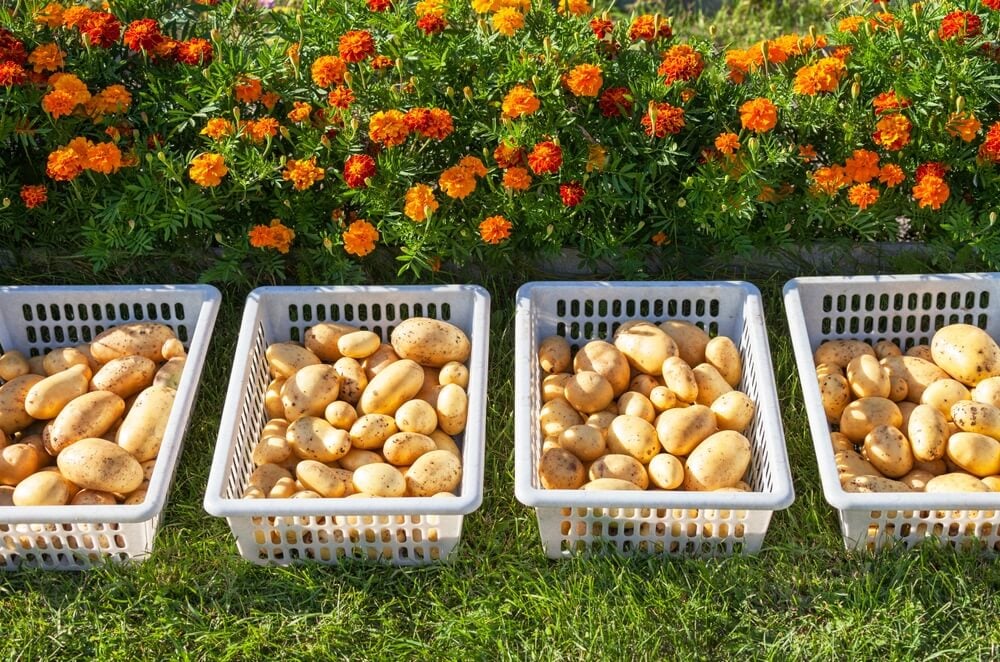
Why grow turf grass lawns when you can plant some edible perennials? Raised beds keep things organized and your back happy, while companion planting (like marigolds with tomatoes) naturally deters pests.
- Rotate crops yearly to prevent soil depletion and pest buildup.
- Intersperse flowers to attract beneficial insects and deter pests.
- Start small. A 4×4 plot can be surprisingly rewarding!
You don’t need anything fancy. Tomatoes, zucchini, bush beans, leaf lettuce, and herbs like basil and rosemary make perfect kitchen gardens.
5. Small-Space Garden
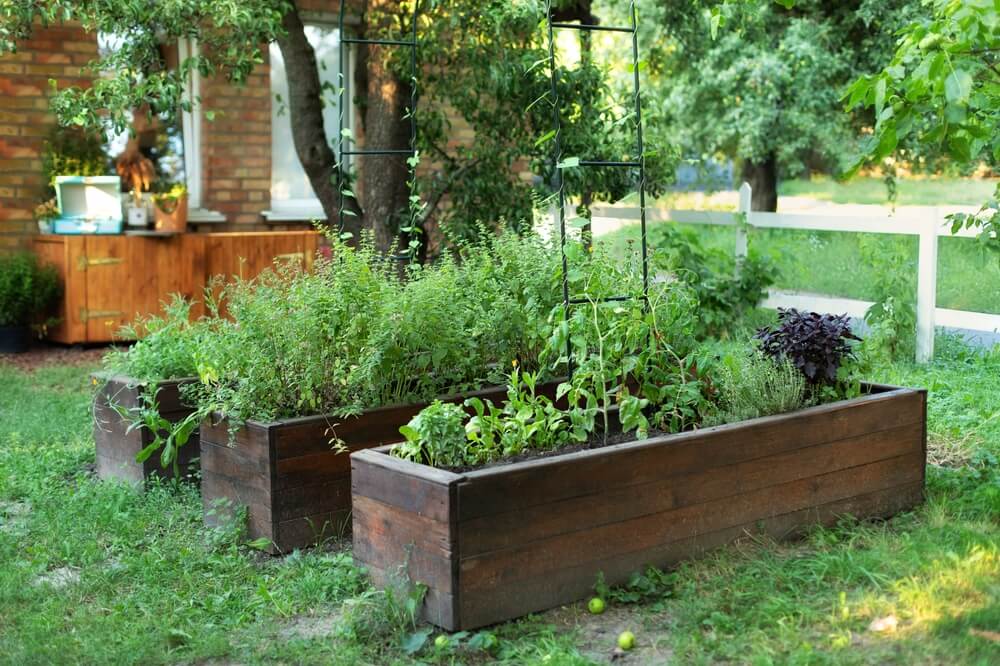
No yard? No problem! Small-space gardens prove you don’t need acres to grow gorgeous plants. Even a tiny backyard can become a mini-Eden. Vertical planters and raised garden beds, combined with hanging baskets, utilize every inch of space that would otherwise go to waste.
- Think cubic feet, not square feet. Grow up, not out.
- Choose multi-harvest plants that continue to produce (herbs, cherry tomatoes).
- Container combos should follow the “thriller, filler, spiller” formula.
Vertical stars such as cherry tomatoes, cucumbers, pole beans, nasturtiums, and compact herbs transform limited square footage into abundant harvests.
6. Heat-Tolerant Garden
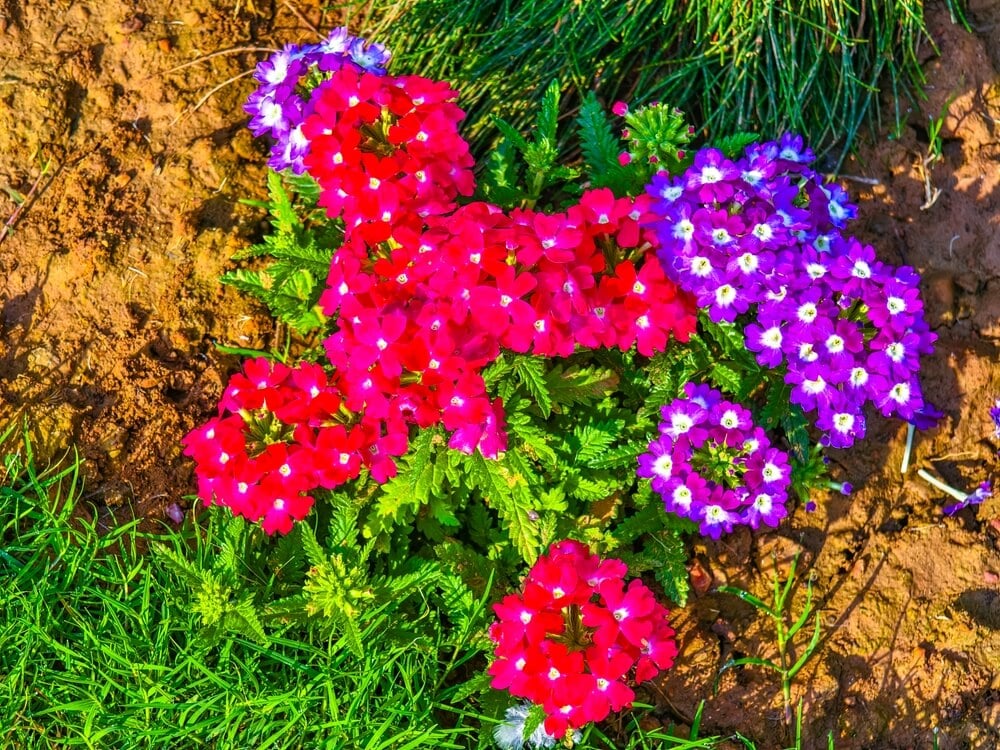
When temperatures soar, these gardens keep their cool! Heat-tolerant designs thrive in the sunshine with plants that practically flourish in triple-digit temperatures. Silver-leaved lavender and rosemary survive and thrive in hot spots, while ornamental grasses add movement and require almost no water once established.
- Morning-only watering prevents fungal issues and maximizes absorption.
- Mulch heavily (3-4 inches) to retain precious moisture.
- Group plants by water needs. Hydraulic zoning saves both plants and effort.
When temperatures soar, rely on drought-resistant champions, including Russian sage, yarrow, sedums, yucca, and lantana, to keep your garden fresh.
Read More – The Ultimate Buff Orpington Chicken Breed Guide! England’s Golden Gift To The Poultry World!
7. Perennial Garden
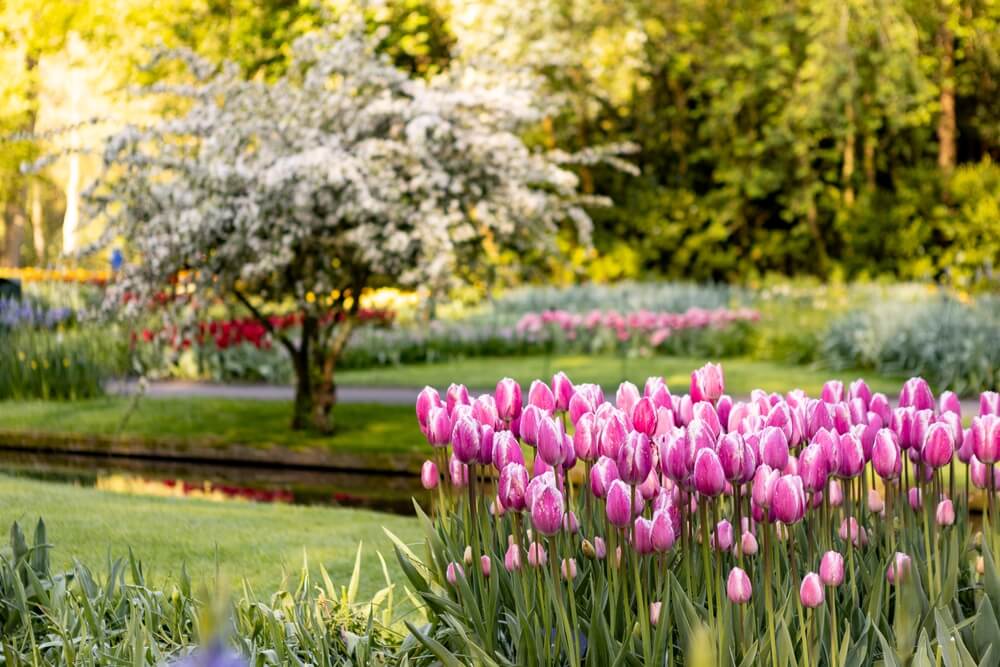
Perennial plants return faithfully each season, often growing more established and spectacular. Early spring might bring forth bleeding hearts and peonies, while summer showcases black-eyed Susans and coneflowers, creating a constantly changing display that requires minimal effort once established.
- Design for sequential blooming to avoid the “one-week wonder” garden.
- Divide your perennial flowers every 3 to 5 years to maintain plant health and promote free expansion.
- Leave fall cleanup for spring. Winter structure protects roots and provides food for birds.
Backbone plants for years of returning beauty include coneflowers, peonies, daylilies, hostas, and black-eyed Susans that require minimal yearly intervention.
8. Wildlife Garden

Wildlife gardens buzz, flutter, and hum with life as birds splash in shallow baths, butterflies nectar on coneflowers, and frogs find homes in boggy corners. Berry-producing shrubs like elderberry offer food sources, while dense evergreens provide shelter from predators and harsh weather.
- Create layers. Understory, mid-story, and canopy to accommodate diverse species.
- Skip pesticides completely. Even “organic” ones disrupt the food chain.
- Add water features with varying depths for everything from bees to birds.
Wildlife gardens buzz with life and feature serviceberry, coneflower, milkweed, sunflowers, and native viburnums for a lovely sanctuary for birds, bees, and butterflies alike.
9. Pollinator Garden
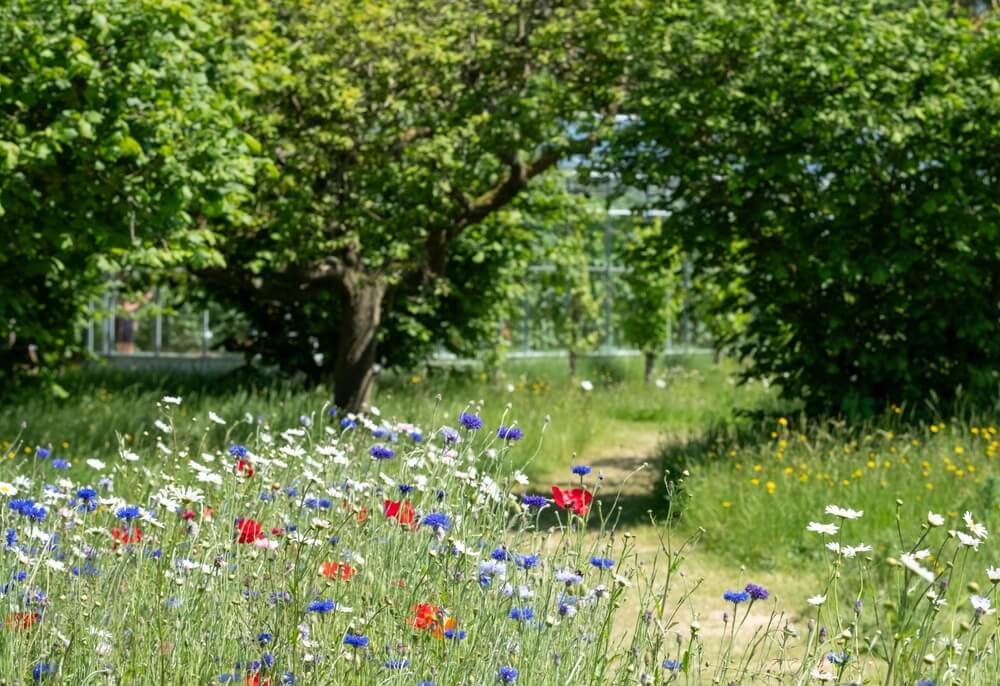
Become the neighborhood bee and butterfly hotspot! Pollinator gardens create crucial habitats for beneficial insects with nectar-rich blooms, such as coneflowers, bee balm, and salvia, that keep the buffet open from early spring until late fall. Different pollinators prefer different flower shapes. Flat landing pads for butterflies, tubular blooms for hummingbirds. So, diversity is key!
- Plant in drifts of at least 3 to 5 plants. It makes finding flowers easier for insects.
- Include early, middle, and late-season bloomers for continuous support.
- Provide bare soil patches. Approximately 70% of native bees are ground-nesting bees.
Bees, butterflies, and fluttering hummingbirds will flock to your yard when you include bee balm, coneflower, salvia, milkweed, and catmint in your garden design.
Read More – How To Grow Beautiful Bonsai Trees In Pots And Containers!
10. Wildflower Garden

Wildflower gardens bring a touch of untamed beauty to even the most suburban settings with their relaxed, seemingly effortless charm. Once established, these low-maintenance wonders self-seed year after year, creating slightly different tapestries each season.
- Start with a clean slate. Existing weeds will outcompete wildflower seedlings
- Skip the generic “meadow mixes” for species adapted to your specific conditions
- Mow once annually in late fall when seeds have dropped to maintain diversity
The secret to a successful meadow lies in choosing regionally appropriate wildflowers, such as black-eyed Susans, coreopsis, bachelor’s buttons, California poppies, and native grasses, that will reseed naturally.
11. Woodland Garden
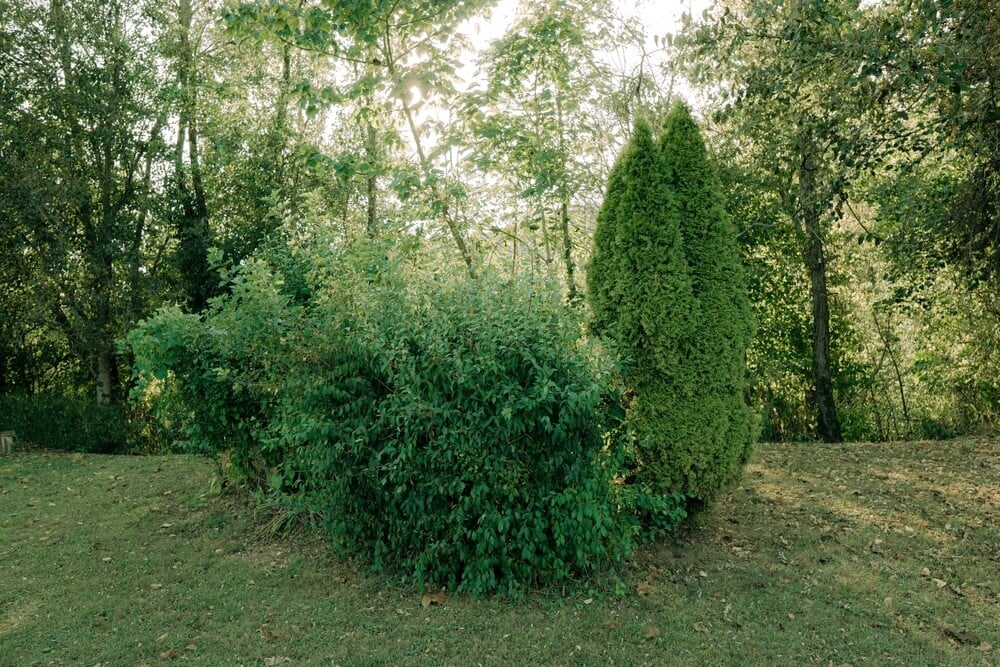
Bring forest magic to shady spots with a woodland garden’s peaceful, primeval vibe. Ferns unfurl their prehistoric fronds beside shade-loving hostas while spring ephemerals like trillium and bloodroot make brief, spectacular appearances before the tree canopy fills in.
- Work with, not against, tree roots. Use shallow-rooted understory plants.
- Mimic forest layers: canopy, understory, shrub layer, herbaceous layer, ground cover.
- Build soil with leaf mulch. Don’t rake leaves away from woodland gardens.
Beneath the dappled shade of trees, woodland specialists, including hostas, ferns, astilbe, hellebores, and bleeding hearts, create a serene understory worth exploring.
12. Rock Garden
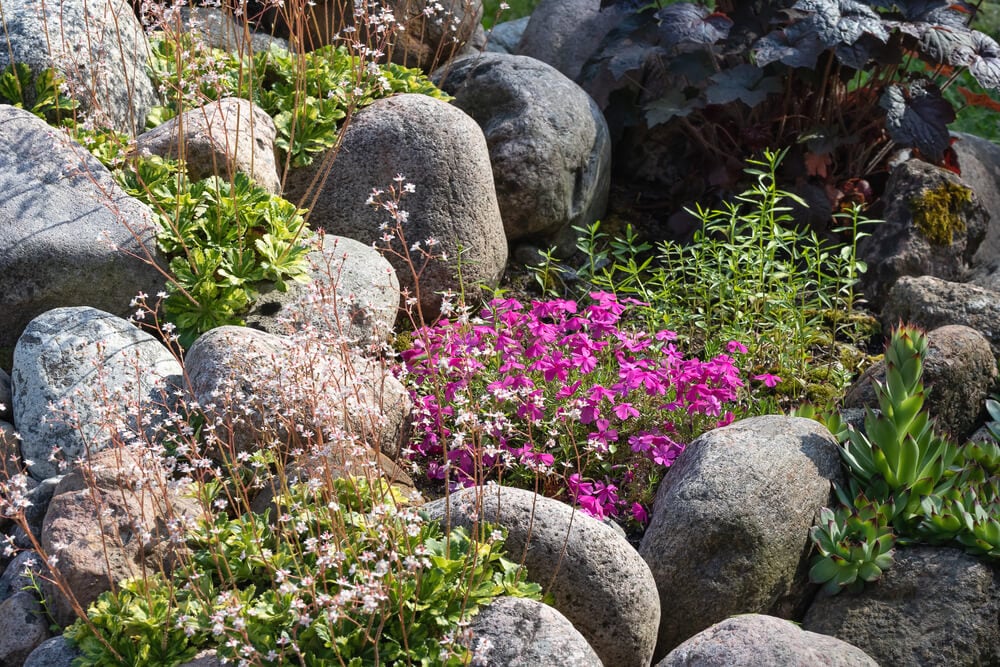
Rock gardens transform challenging slopes into textural masterpieces with their artful combination of stone and compact, drought-tolerant plants. Succulents nestle between crevices, while cascading creepers, such as thyme and sedum, soften hard edges with their flowing forms.
- Create proper drainage. It’s about the gravel under the soil, not just rocks on top.
- Position rocks first, plants second. Rocks are the bones of the garden.
- Think small. Dwarf varieties require less frequent pruning, which helps maintain their compact size.
Alpine and drought-tolerant specialists, including sedums, hens and chicks, creeping thyme, small dianthus, and dwarf conifers, thrive among rocks while staying naturally compact.
Read More – 14 Best Fruit Trees You Can Grow In Pots And Containers!
13. Fairy Garden
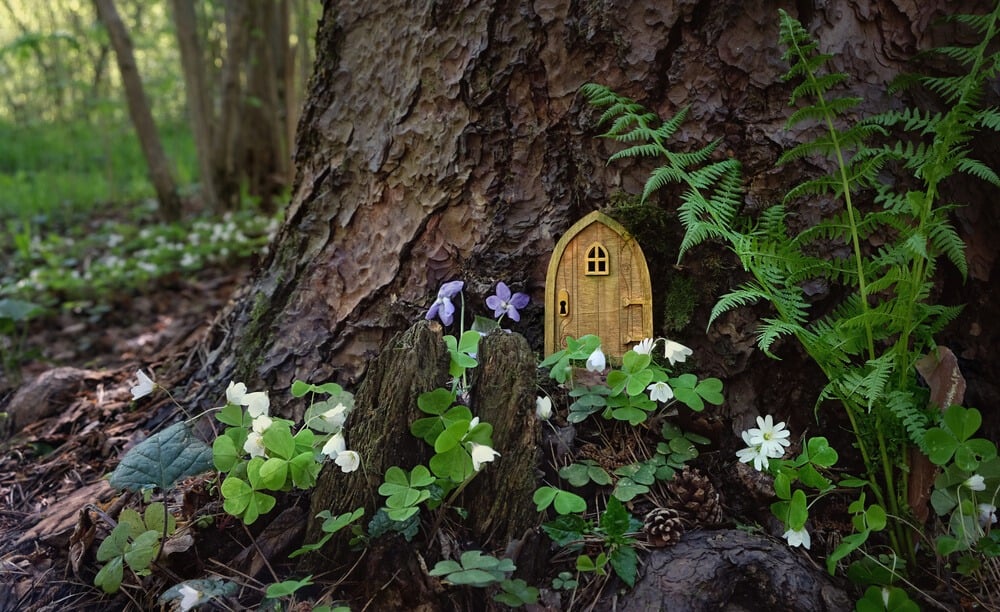
Fairy gardens create magical miniature worlds with tiny-leaved plants like baby tears and Irish moss, setting the scene for diminutive furniture, fairy houses, and decorative elements. These enchanting creations are ideal for creating a garden theme in small spaces, such as container gardens or terrariums.
- Scale matters. Mix small-leaved plants with accessories of a suitable size.
- Create visual narratives with pathways that lead the eye to “destinations.”
- Incorporate living moss for an instant touch of age and woodland authenticity.
Creating miniature magic requires correctly scaled plants, such as Irish and Scotch moss, baby tears, miniature sedums, tiny ferns, and dwarf mondo grass.
14. Cottage Garden

Cottage gardens are flower-packed paradises overflowing with blooms in a seemingly unplanned (but secretly strategic) design that mimics nature’s gorgeous chaos. Fragrant roses climb picket fences while hollyhocks and foxgloves provide vertical drama, creating a haven for pollinators and people seeking a touch of nostalgic beauty.
- Embrace controlled chaos. Self-seeders create the signature cottage look.
- Support floppy flowers early with discrete stakes before they need rescue.
- Edge beds sharply. Crisp boundaries make exuberant planting look intentional.
Classic cottage gardens overflow with roses, hollyhocks, foxgloves, delphiniums, and peonies that blend structured elegance with romantic abandon.
15. Japanese Zen Garden
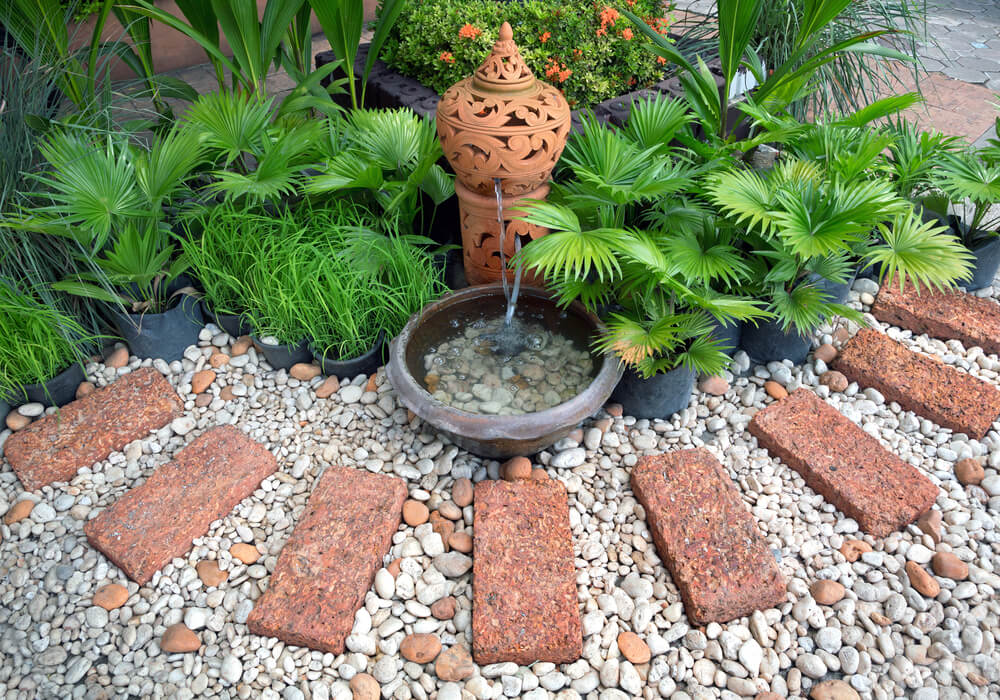
Find tranquility in clean lines and thoughtful restraint. Japanese Zen gardens utilize carefully positioned rocks, raked gravel patterns that represent water, and mindfully pruned plants to create spaces that calm the mind and invite contemplation.
- Odd numbers rule. Group plants and rocks in sets of 3, 5, and 7.
- Maintain negative space. The emptiness between elements creates tranquility.
- Limit the color palette. Subtle greens and textural differences create depth and dimension.
Achieving meditative harmony requires carefully chosen elements such as Japanese maples, cloud-pruned junipers, mondo grass, ferns, and moss that emphasize form over flower.
Read More – Our Official Homesteading Calendar – Here Are The Crucial Homesteading Chores For Each Month!
16. Tropical Garden
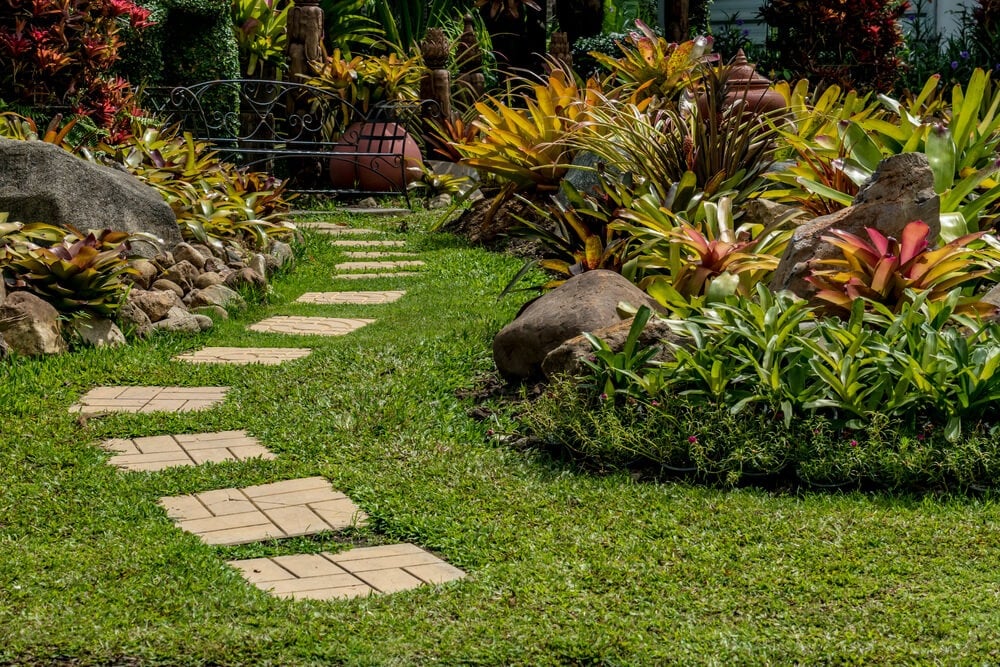
Vacation vibes year-round! Tropical gardens transport you to exotic destinations with lush, oversized foliage in multiple shades of green, creating a cooling effect even on hot days. Bold architectural plants, such as bananas and elephant ears, mix with vibrant flowering ginger and birds of paradise for a layered jungle effect.
- Create windbreaks. Tropical plants with large leaves shred in gusty conditions.
- Build rich soil. Tropicals are heavy feeders needing organic matter.
- Layer plants for humidity. Dense planting creates its own microclimate.
Transform your backyard living space into a lush paradise with bold-leaved beauties such as cannas, elephant ears, hibiscus, banana plants, and birds of paradise. These epic plants create instant vacation vibes.
17. Fall Flower Garden

Autumn doesn’t mean the end of garden color! Fall flower gardens extend the growing season with late-blooming stars like asters, Japanese anemones, and toad lilies that shine just as summer plants begin to fade.
- Cut back early bloomers by one-third in June for compact fall flowering.
- Include ornamental grasses for movement, structure, and backlit magic.
- Focus on berries and seedheads, not just flowers, for extended seasonal interest.
Autumn’s glory shines through late-season bloomers, such as asters, chrysanthemums, Japanese anemones, toad lilies, and ornamental grasses, which provide color when most gardens fade.
18. Spring Bulb Garden

Nothing says “winter’s over!” like the cheerful faces of spring bulbs pushing through the barely-thawed earth. These gardens create much-needed color when the landscape is otherwise barren, with waves of snowdrops giving way to crocuses, daffodils, and tulips in a carefully orchestrated succession of bloom.
- Plant bulbs in “rivers” or drifts, not formal rows, for a natural effect.
- Layer bulbs at different depths in the same hole. Bulb lasagna (yes, it’s a thing) can help extend bloom time!
- Disguise dying foliage by interplanting with emerging perennials.
Nothing announces winter’s end more jubilantly than waves of crocus, daffodils, tulips, hyacinths, and alliums emerging in succession.
Read More – How To Grow Yummy Pole And Bush Beans In Your Backyard Garden!
19. Summer Flower Garden

Summer flower gardens burst with color when days are long and bright, featuring sun-worshippers like zinnias, sunflowers, and dahlias that produce armloads of blooms for cutting. These gardens are perfect for entertaining spaces, with their peak coinciding with the outdoor living season.
- Deadhead religiously. It’s the difference between weeks and months of blooms.
- Include white flowers. They brighten gardens and glow in the evening light.
- Mulch before the heat hits. Stabilizes soil temperature during stress periods.
During the height of the growing season, reliable performers like zinnias, cosmos, salvias, sunflowers, and dahlias keep the color coming through the hottest months.
20. Winter Interest Garden
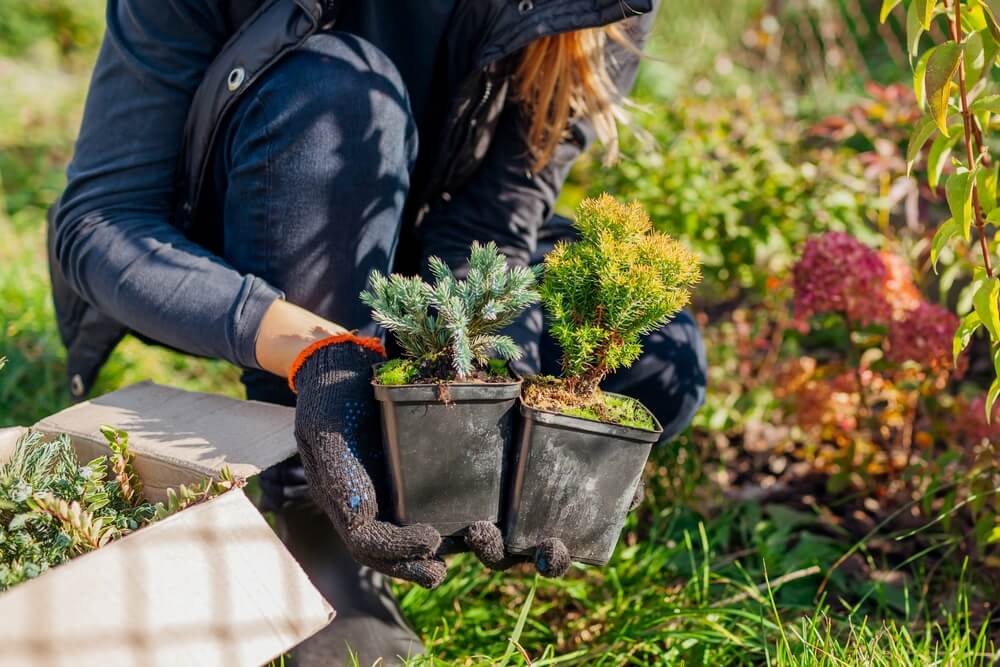
Winter interest gardens shine when everything else sleeps. They offer structural elements that take center stage once leaves drop. Red-twig dogwoods provide brilliant color against snow, while ornamental grasses hold their plumes through winter winds.
- Plant for structure. Branching patterns matter when leaves are gone.
- Include plants with persistent berries or seedheads for food and visual interest.
- Position architectural plants where the low winter sun creates dramatic shadows.
Even in the coldest months, structural elements, including red-twig dogwood, winterberry holly, ornamental grasses, evergreen conifers, and witch hazel, provide texture, color, and visual interest through movement.
21. Fragrance Garden
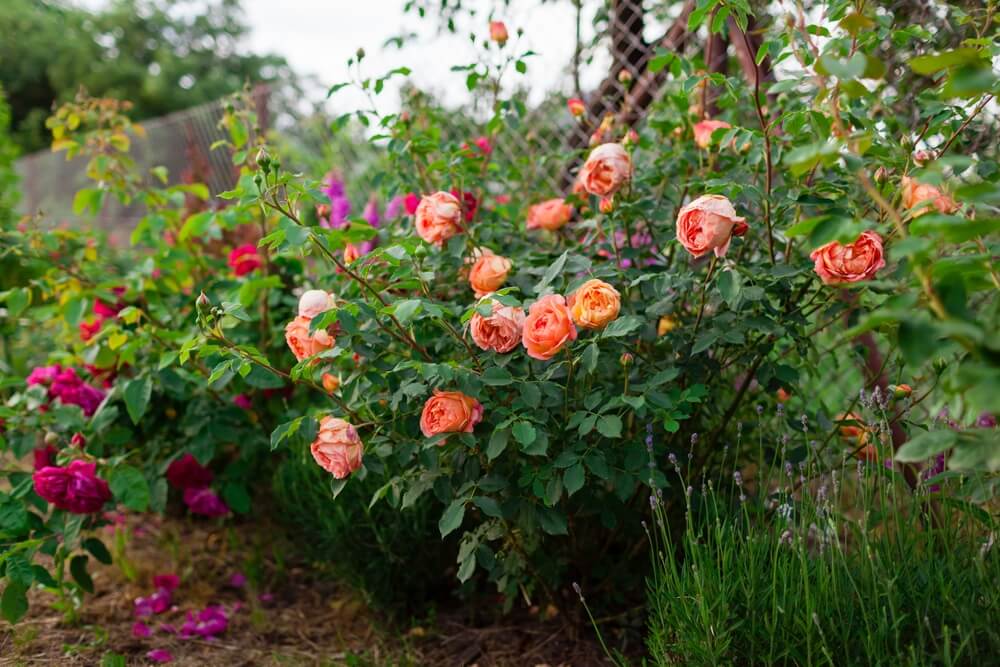
Engage your nose as well as your eyes! Fragrance gardens add an invisible yet powerful dimension to outdoor spaces, featuring strategically placed scented plants that release their perfumes at various times of day.
- Place aromatic plants at the edges of paths where brushing releases scent.
- Layer scents by bloom time. Our noses fatigue with constant exposure.
- Include evening-scented plants, such as nicotiana, for twilight sensory experiences.
Your nose will thank you for including intoxicatingly scented roses, lavender, lilacs, jasmine, and heliotrope strategically placed where you can enjoy their lovely fragrance.
Read More – 21 Real-World Chaos Garden Ideas – Let It All Grow Wild!
22. Butterfly Garden

Create a fluttering rainbow in your yard! Butterfly gardens serve as a nursery and nectar bars for these beneficial insects, with host plants like milkweed providing food for caterpillars and flat-topped flowers offering perfect landing pads for adult butterflies.
- Plant host plants, not just nectar. Butterflies need specific plants for their larvae.
- Include mud puddles. Butterflies need minerals that they extract from damp soil.
- Create wind protection. Butterflies struggle in open, gusty locations.
Beyond the essential milkweed for monarchs, butterfly magnets like Joe-Pye weed, coneflower, aster, Liatris, and lantana will turn your backyard garden into a lovely kaleidoscope of fluttering wings.
23. Water Garden
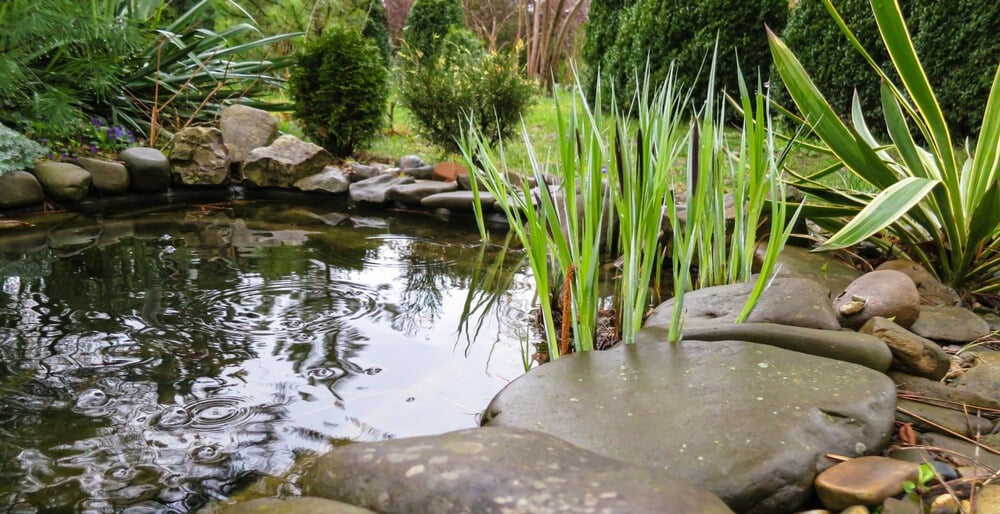
Water gardens create instant tranquility with reflective surfaces and gentle movements while cooling the surrounding area by several degrees on hot days. Floating water lilies change throughout the season, opening their exotic blooms each morning and closing them at night.
- Balance submerged, floating, and emergent plants. Aim for 60% water coverage.
- Include moving water. Even small solar bubblers discourage mosquitoes.
- Build broader, not deeper. Shallow edges are safer and support a greater variety of wildlife.
Surrounding your water feature with moisture-loving beauties such as cardinal flowers, Japanese iris, creeping Jenny, water lilies, and papyrus creates a cohesive aquatic ecosystem.
24. Moonlight Garden

Extend your gardening day into the evening hours! Moonlight gardens glow after sunset with white and silver plants that capture and reflect even the faintest light from the moon and stars.
- Focus on white and silver. These colors reflect available moonlight.
- Include plants with evening fragrance when human activity is at its peak.
- Plan viewing spots. Design with seating that faces the positions of the moon’s rise and set.
Evening enchantment awaits with luminous white and silver plants, including moonflower, white nicotiana, dusty miller, lamb’s ears, and white roses that glow under moonlight.
Read More – 9 Best Ways To Preserve Your Garden Herbs For Long-Term Storage!
25. Medicinal Herb Garden
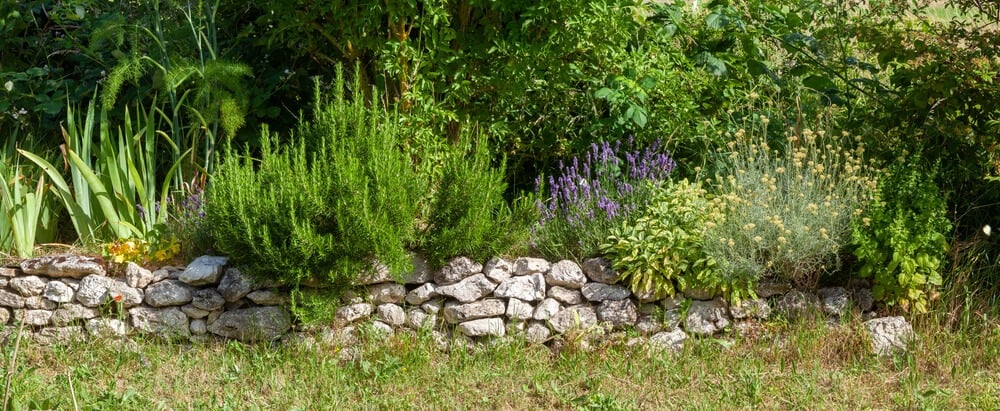
Grow a backyard pharmacy! Medicinal herb gardens connect us to ancient healing traditions, utilizing plants that have been used therapeutically for centuries. Echinacea strengthens the immune system, while chamomile calms frazzled nerves, creating a beautiful and functional collection.
- Research herb-drug interactions before consumption. Natural isn’t always safe.
- Harvest morning-picked herbs after the dew has dried but before the heat disperses the oils.
- Label meticulously. Many medicinal plants have dangerous lookalikes.
Beyond their healing properties, medicinal workhorses such as echinacea, lavender, lemon balm, calendula, and chamomile also offer beauty benefits in addition to their therapeutic advantages.
26. Vertical Garden

The sky’s the limit when you grow up instead of out! Vertical gardens transform fences, walls, and arbors into living tapestries that maximize growing space in even the most confined areas. Climbing roses and clematis create dramatic flowering walls, while edibles like peas and cucumbers become productive screens on trellises.
- Install the strongest supports at planting. Retrofitting is nearly impossible.
- Create access lanes for maintenance. Reaching through one plant to tend another damages both.
- Consider weight when wet. Saturated soil can be surprisingly heavy.
Climbing champions that maximize vertical space include clematis, scarlet runner beans, hyacinth bean vine, nasturtiums, and sweet peas trained on trellises, walls, or obelisks.
Read More – 21 Money-Saving Homestead Skills That Help You Save The Most Cash
Conclusion

The best garden themes reflect your style while honoring your site’s natural conditions. Start with one theme or mix and match elements that speak to you. There are no garden police! The plants we’ve highlighted are just the beginning. As your confidence grows, so will your garden’s unique personality. Now grab your trowel and let your garden adventure begin!
What about you?
- Are you planning to plant a new garden this year?
- What garden theme or variety interests you the most?
- Are there any unique plants or shrubs you want to grow?
Thanks for reading.
Have a great day!

